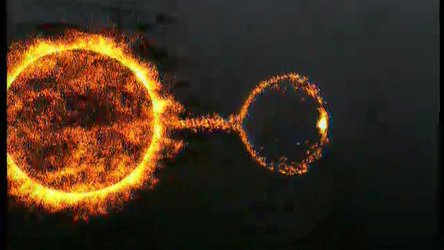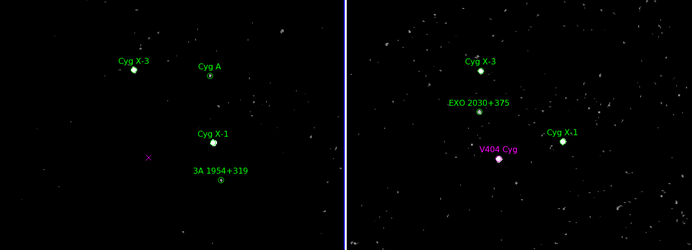

Integral's JEM-X monitor sees Cygnus X-1
The Joint European X-ray Monitor (JEM-X) image of Cygnus X-1 shows the intense X-rays being emitted by this object. This image was taken on 28 November 2002 and covers approximately the same area of sky (equivalent to 10 full Moons) as the OMC image. Normal stars emit very few X-rays and this is why the many other stars seen in the OMC image do not show in this image. Detecting X-rays and gamma rays is a good way to identify strange and interesting star systems because high-energy emission usually indicates something violent is taking place. In the case of Cygnus X-1, X-rays are created as gas from the star HDE 226868 spirals to its destruction around the black hole. Cygnus X-1 emits so many X-rays that it could be detected by JEM-X in just a few seconds. JEM-X contains two detectors, the first of which was activated on 27 October 2002 and the second one two days later.
Cygnus X-1 is about 10 000 light years from Earth and one of the brightest high-energy emitters in the sky. It was discovered in the 1960s and is thought to be a black hole, ripping its companion star to pieces. The companion star, HDE 226868, is a blue supergiant with a surface temperature of around 31 000K. It orbits the black hole once every 5.6 days.





